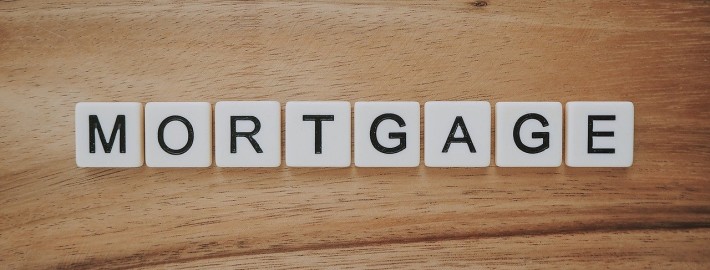Junior Liens Who Choose to Foreclose
By Edward Brown
Many lenders opt to only fund first mortgages because they believe that second mortgages are too risky, but is that always the case? Not always. Not all second mortgages are equal.
Many private lenders may choose to fund a junior lien where the first mortgage is relatively small in comparison to the second. For example, a $200,000 second behind a first of only $40,000 on a property worth $500,000 would be an attractive loan to fund for many lenders, especially if they can command a higher interest rate due to the fact that the loan is in second position. However, if there is a foreclosure in the future, the second will somehow have to deal with the first mortgage. This can be troublesome if the first is very large; especially if the second is relatively small in comparison to the first. Why?
In looking at a foreclosure, a lender has to strategize. In the case of the second mortgage, it is imperative that the first does not foreclose out the second as there is usually nothing left over from the foreclosure to pay the second. In California, the foreclosing party gets to “credit bid” its loan. This means that it can simply bid [at the auction/trustee sale] what it is owed. Non foreclosing parties need to come up with cashier’s checks in order to bid. This can be a potential hardship for the second mortgage if the first is the foreclosing party.

For example, if we look at a situation where the property has a value of $1,400,000, the first is $800,000 and the second is $200,000 and the first is the foreclosing party, the first would most likely credit bid its entire $800,000 [it does have the right to bid less than what it is owed, but, if the value is reasonably higher than what is owed to the first, it will normally credit bid what it is entirely owed. The times where the lender bids lower than its entire principal balance is when the lender does not want to own the property and is willing to take a loss just to get the loan off of its books, or the value of the property does not substantially exceed the balance of the first mortgage].
Any bidder at the auction/trustee sale would need to come up with $800,000 at the auction itself or more should any bid exceed $800,000 if the bidder wants to be the highest bidder. In this instance [where the first mortgage is the foreclosing party], the second is not allowed to credit bid its $200,000 balance. It would need to come up with the $800,000 to pay off the first and its $200,000 second mortgage in order to be made whole. True, the second would just get its $200,000 back because that is what it is owed, but, unfortunately, in this case, since it was not the foreclosing party, it has to come up with cash just as any other bidder. Only the foreclosing party is allowed to credit bid.

For this reason, it is important for the second to have a strategy in place. The second wants to be the foreclosing party in most instances, driving the bus, so to speak. Borrowers usually go into default for two main reasons. First, they stop making payments to the lender. Second, the lender’s loan is due, and the borrower has not refinanced or sold the property. In the case where payments have not been paid, junior lien holders have the right to “cure” the first. One can usually do that simply by making the payments to the first. Since foreclosure in California normally takes three months and 21 days, one strategy is for the second to cure the first and start its own foreclosure.
However, this may be cost prohibitive, especially if the first is large and the arrearages on the first are a few months. When the first files for foreclosure, junior lien holders are to be notified. This gives them notice, so they can have the opportunity to cure the first. The second then files its own foreclosure [either because the borrower has probably also not made payments to the second mortgage or because most loan documents state that if a borrower is in default on any mortgage associated with the property, its loan is also in default whether or not the borrower has kept the second current with payments].

One strategy for the second lien holder is to cure the first as soon as possible to allow the second to be the foreclosing party. That way, the second would be allowed to credit bid its loan, but would not eliminate the first; it would have to take the property subject to the first and have to deal with them post foreclosure. However, what happens in the case where the second pays just enough to get the first to stop its foreclosure for the time being, the second starts its own foreclosure, and then does not any more payments to the first and allow the first to start its own foreclosure?
Let’s look at an example and see how this might play out; in our previous example, the property was worth $1,400,000, the first was $800,000, and the second was $200,000. Let’s presume that the borrower stopped making payments on both the first and second mortgages. Both loans have a maturity date five years in the future. If the first files foreclosure, the second could cure the first by making only one mortgage payment to them. Now it is true that most lenders will not immediately file a notice of default after 30 days, but the point here is for the second to make the first mortgage cancel or delay [even temporarily] its foreclosure, so the second mortgage can start its own foreclosure for two main reasons; it puts the second in a situation where in the first does not foreclose out the second, and it allows the second to credit bid its loan at the time of the trustee sale.

Now it is true that, if the second does not make any more payments to the first [other than the one to get the first to stop its foreclosure], the first may start a foreclosure again, but, the first’s foreclosure will be after the second mortgage has completed its foreclosure, buying time for the second to deal with the first [or sell or refinance the property] if the second is ultimately the high bidder at auction. If another bidder outbids the second, the first would get paid, the second would get paid, and the owner [borrower who defaulted] would pocket the difference.
If there is enough equity in the property, either the property will receive a high enough bid to pay off all of the liens, or the second [the foreclosing party in our example] should be able to flip the property fairly quickly or decide to keep the property, as they would be the new owner. If they choose not sell the property, they should very quickly discuss with the first some sort of agreement to either refinance [a new loan to the second who is now the owner] or make payments for a period that will allow time for a new lender. The above information is for discussion purposes only and, as always, one is advised to discuss real estate related issues with a qualified real estate attorney prior to any legal action.

Edward Brown
Edward Brown currently hosts two radio shows, The Best of Investing and Sports Econ 101. He is also in the Investor Relations department for Pacific Private Money, a private real estate lending company. Edward has published many articles in various financial magazines as well as been an expert on CNN, in addition to appearing as an expert witness and consultant in cases involving investments and analysis of financial statements and tax returns.












